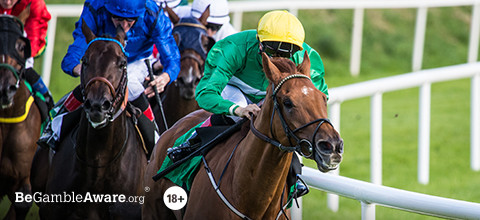
Leopardstown
Location and History
Leopardstown is one of Ireland’s best-known horse racing tracks and unlike a few others, has the significant advantage of being very close to Dublin City centre. That means racing fans who live in the Irish capital, as well as tourists and weekenders on stag dos and birthday celebrations, often make the most of its proximity to Dublin and pay it a visit in search of thrills, high-class racing, and the possibility of making a few quid if the rub of the Leopardstown green goes their way.
They all have Captain George Quin to thank for its existence. After leaving the army in 1871, he returned to Ireland, where he bred racehorses and served as the Keeper of the Match Book for the Irish Turf Club from 1885. In 1888, he took on the role of Secretary-Manager for the Leopardstown Club, a position he assumed after he had constructed the racecourse earlier that same year.
The course, built by Quin, was modelled on England’s Sandown Park Racecourse and was acquired by the Horse Racing Board of Ireland in 1967.
The course made headlines during the Second World War when infamous (British) Royal Air Force Pilot Hugh Verity, decorated five times for gallantry and notable for flying British secret agents to and from France, force-landed on the Leopardstown track while attempting to return to England before coming across poor weather that meant he couldn’t carry on his journey.
He was captured, but later fled with the help of British Intelligence Officers. There were no hard feelings from Verity though, writing a letter to the officer in charge of the camp saying: "(Thank you for) looking after us so fairly . . . I always found the Irish army extremely courteous and considerate and extremely impartial . . . I will be delighted to tell my friends over here how well we were fed and housed.”
You can get to Leopardstown by car via the M50, with drivers needing to take exit 15 in what is a short drive of just six miles from the city centre. If going by train, travel to Sandyford from Sr. Stephen’s Green. It’s a short walk from the station with complimentary shuttle buses available on race days.
Types of Racing at Leopardstown and Notable Races
As is the case with the majority of courses in Ireland, it’s used for both National Hunt and flat racing.
It hosts roughly 22 meetings a year, with April being the only month where there tends to not be any meetings at all. Late December is jam-packed with high-quality jump races and May to July are the months when most of the best flat races take place there.
Over a four-day period (26th to 29th December), racegoers can enjoy the (jumps) Christmas Festival, which stages seven Grade 1 contests, of which the Savills Chase is perhaps the most prestigious.
Fast forward a few weeks and jumps racing fans can look forward to the Dublin Racing Festival in early February (3rd and 4th in 2024) which includes the Irish Gold Cup and Spring Juvenile Hurdle.
If it’s flat racing you want, the Champion Stakes in September is arguably the biggest race of the season, a Group 1 event open to horses three or older, who compete over 1 mile and two furlongs with notable recent winners including Dylan Thomas (2006 and 2007), Sea the Stars (2009) and Magical (2019 and 2020).
The Irishracing.com website describes the flat and jumps courses at Leopardstown as follows:
“The Flat course is a left-handed, galloping oval track with easy bends and a long uphill finish from the final bend.
The Jumps track is again fair but with a testing uphill finish which really exposes a horse's stamina and three fences come up quickly down the back straight. The inner hurdles course is much sharper, and it pays to race prominently.”
Heroes at Tipperary
Let’s look at the trainers and jockeys who have taken a particular liking to this course over the years by being perennial winners or having a particularly high strike rate.
Top Trainers
Flat
- The great Aiden O’Brien has trained over 100 winners here across the years, more than anyone else. Having put out 1933 horses here at the time of writing, he saw 401 of those going on to win. He also boasts the highest strike rate of any trainer at 20%.
- Dermot Weld and Jim Bolger are the only trainers on the flat to have produced over 200 winners here at Leopardstown, with Weld having 276 winners and Bolger 248.
National Hunt
- Willie Mullins has ruled the roost here over the years here, with over three times more winners than anyone else. He’s had 262 of them, while his strike rate of 20% is also double anyone else's, with the curious exception of Charles Byrnes, who currently has 22 winners from 102 (21%) jumps horses sent out to race.
Top Jockeys
Flat
- The now-retired Pat Smullen achieved an impressive record with 241 wins here, while the only other jockey to surpass 200 wins at this location is Kevin Manning, with 218 victories. Kevin Manning's most recent win at the track was in October 2022.
National Hunt
- The great Ruby Walsh (now retired) is king of the flat racing here with 101 wins from 462 rides, and a strike rate of 21%.
Leopardstown Trivia
- On Day 1 of the 2022 Irish Champions Festival at Leopardstown, the eight races on the card resulted in winners trained by seven different trainers.
- In flat handicaps for two-year-olds at this venue, it's advisable to steer clear of favourites, as only 8 out of 52, which is just 15%, have gone on to secure victory.